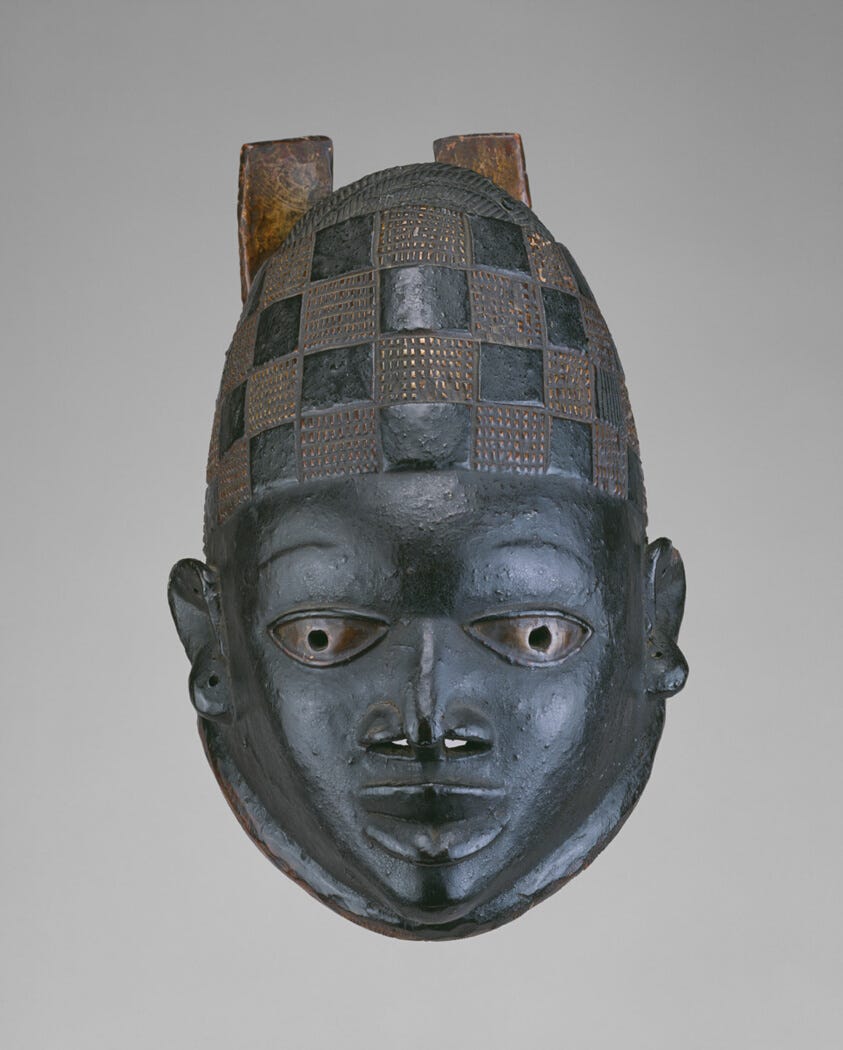Egungun and Gelede festivals: Unravelling our archetypes and uncertain identities.
Behind the mask.
Egungun and Gelede festivals in every Yoruba settlement all over the world is a celebration and veneration of our ancestors. While Egungun in Yoruba spirituality is believed to be a physical manifestation of the ancestor spirits, Gelede on the other hand celebrates mothers, female ancestors and deities, elderly women of the community. The power and spiritual capacity they carry not only on fertility but also correct social behavior, with a philosophy that rest on the maxim “esho l'aye” (the world is fragile), live with caution, diplomacy and respect.
Egungun are believed to be ancestors from heaven who had returned to hear and put right the complaints of the people left behind to bless them with human and crop fertility and also with general prosperity (Ojo, 1966, Pg 189). Egungun is that which facilitate or bring about stability, unity, peace and joy. The festival is celebrated to bring about well-being, harmony, stability and promoting the community according to Odu Ifa Oworin-Se which describes Egungun as Sayegun.
Odu Oworin Aseyin recalls that at a certain time the earth was threatened with collapse. Sacrifice was prescribed by Ifa to Olodumare who then sent spiritual beings known as Sayegun the first Egungun to help stabilize Aye (earth). Celebrating and venerating Egungun is connecting to the divine through the souls and memories of the ancestors, the communion between the living and the ancestors. Our ancestors are heavenly promoters, capable of crossing the line that separates the world of the ancestors and this terrestrial plain.
Archetypes are universal inborn models of distinct aspects of identity and personality that plays a role in influencing behavior, they are primitive mental image inherited from the earliest human ancestors and supposed to be present in the collective unconscious. Archetypes are universal inborn models of distinct aspects of identity and personality that play a role in influencing human behavior. According to Carl Jung (Swiss Psychiatrist and Psychotherapist), archetypes are archaic forms of innate human knowledge passed down from our ancestors, they represent universal patterns and images that form our collective unconscious, they are innate, hereditary and universal. Jung postulated that the human mind retains fundamental, unconscious, biological aspects of our ancestors. Jung’s philosophy balances the conscious and unconscious parts of the psyche, the conscious being the physical world/society and the unconscious which he called “shadow” comprising of personal unconscious, cultural unconscious, collective unconscious, complexes etc. He further said, confronting and integrating our shadows is a crucial step towards self understanding and growth.
So, why bring Carl Jung into the conversation? It is to help us understand the importance of viewing the world with unique cultural worldviews based on ancestral root and understanding not based on the perspective of others whose worldview is totally different. Do you as a person know how your ancestors view the world of science, spirituality, community and so on? Do you know their struggles, achievements, complexes, discoveries, general worldview? When able to answer these questions accurately or to some extent, it can help with reconciling your unconscious (shadow) and conscious reality, which will further help in understanding self. It will also help one to grow both in knowledge and spirituality and also embrace ones uniqueness. Don’t forget that these achievements, struggles, feats are inborn, innate knowledge in our subconscious waiting to be tapped into.
Every Yoruba festival is a form of art with specific visual and verbal metaphors. This is why in Egungun and Gelede festivals, the specially created shroud-costume assemblage the Egungun wears is to totally obliterate the identity of the human agent that puts it on, in order to conceal the power that gave form to the ancestral spirit. Real meaning of Egungun is power concealed, it is to conceal the unknowable. For the Gelede, the mask worn by the human agent teaches both the virtues of social life and reminds the women of Yoruba society of their role with respect to others. The idiosyncratic wooden headdresses, a balance of symmetry and proportion, artistic and innovational, reminds women of the quality of patience, calmness and coolness desired in women.
May we not forget the way of our ancestors, may we not forget their philosophies toward life and their achievements, may we learn from them, honor them and achieve more than they did. Ase
Till we meet again through my writings, Ire oo.





